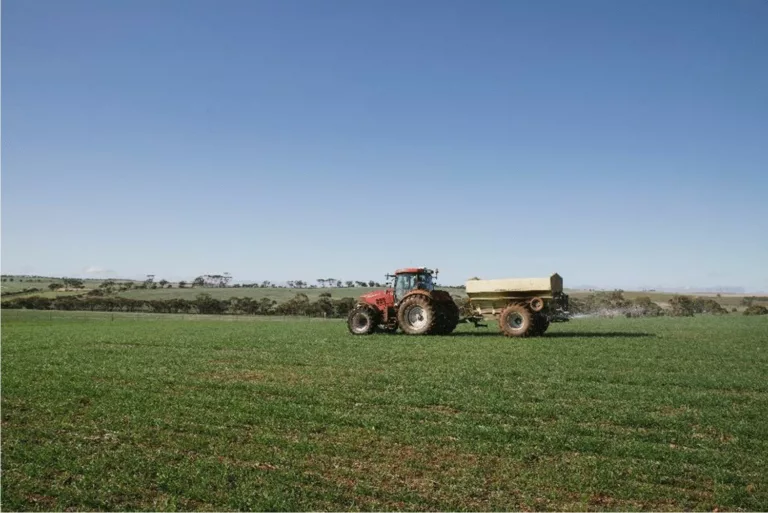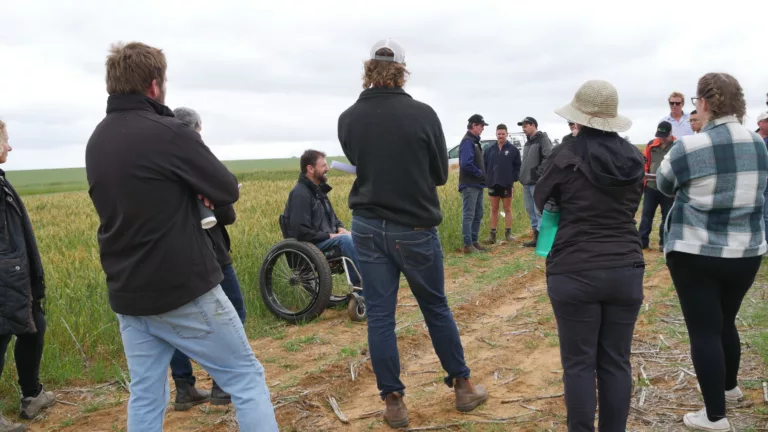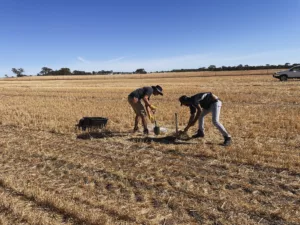AGGREGATE: NEWS & EVENTS
After record harvests, how much nitrogen will be tied-up in high wheat stubble loads?
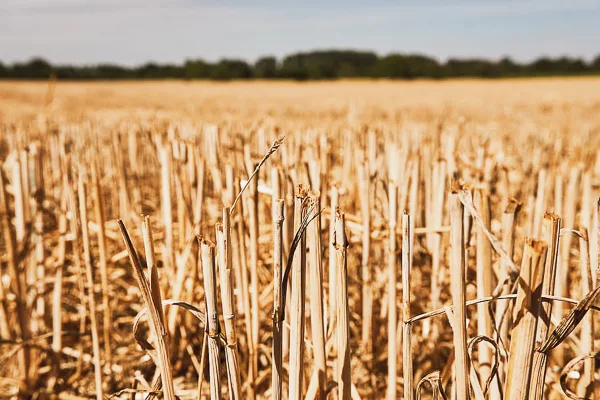
KEY POINTS
- Microorganisms tie-up soil nitrogen as they break down high stubble loads
- Extra fertiliser nitrogen might be needed to avoid crop deficiency
- Stubble management impacts nutrient balances over more than just a single season

The record harvests of the 2021 and 2022 seasons in Western Australia (GIWA, 2023), and the relatively high input of fertilisers these crops have required to sustain these yields, has likely resulted in export of a lot of nitrogen (and other nutrients) from the soil.
This can create a growing nitrogen deficit in many paddocks that will need to be addressed to provide subsequent crops the nutrients they require to meet expected or desired yield targets.
The big harvests have also resulted in relatively high stubble loads on paddocks, which will impact how a new crop can access existing nitrogen in the soil and applied fertiliser nitrogen – particularly depending on out of season rainfall.
The relatively dry summer across much of the WA wheatbelt suggests the breakdown of these residues associated with early season rainfall events could also influence nitrogen dynamics and management.
Why is nitrogen tied-up by wheat stubble?
Cereal stubble provides carbon as a food source for microorganisms. In order for the microorganisms to break down the stubble, they require nitrogen.
Microorganisms will access the nitrogen that is in the stubble to fuel this decomposition process. But wheat stubble doesn’t contain enough nitrogen to meet the microbial demand because the carbon to nitrogen ratio (C:N) of wheat stubble is about 120:1 which is far greater than the C:N ratio of microorganisms of 12:1.
To get the extra nitrogen they need, microorganisms consume nitrogen in their environment; the soil. This soil nitrogen is in a plant-available form which the crop needs to access to grow, and so this competition between plant and microorganisms can lead to nitrogen deficiency of the crop, particularly early in the growing season where the demand for nitrogen is higher.
This competition is known as nitrogen tie-up or immobilisation. As microorganisms die, they slowly release nitrogen back into the soil.
With a high C:N, retaining wheat stubble contributes to the organic matter status of the soil and provides a food source for microorganisms, but the stubble itself provides less than 5% of a plant’s nitrogen demand (Kirkegaard, 2018).
The dual effect of low soil nitrogen from big crops in recent years and high stubble loads can lead to even more soil nitrogen being tied-up. An imbalance between nitrogen supply and losses can cause nitrogen deficiency during the crop’s early growth stages.

How much nitrogen will be tied-up by wheat stubble?
Stubble generally takes months of years to break down. In no-till systems where wheat stubble is retained, residues are present from successive crops of different ages.
The nitrogen used to fuel this decomposition won’t be consumed all at once, and instead is gradually consumed. This makes it challenging to predict the possible contribution of stubble to the nutrition of the crop going in.
However, field research has produced updated guidelines to help calculate the amount of nitrogen that will be tied-up by microorganisms in a wheat stubble retained system.
Worked example in 5 steps
A grower retains approximately 5 t/ha of wheat stubble (3.3 t/ha grain yield at a harvest index of 0.4) and wants to estimate the likely impact of the above-ground stubble on soil nitrogen levels in the paddock. Assume a C:N ratio of 120:1 in the stubble.
Step 1
Calculate the amount of C in above-ground stubble that is added to soil:
Stubble (kg/ha) x (typical C% of stubble) = 5000 x 0.45 = 2250 kg C/ha
Step 2
Calculate N present in the crop residues, remembering that in this example stubble contains 2250 kg C/ha and wheat has a C:N ratio of about 120:1:
2250 ÷ 120 = 18.75 kg N/ha in the stubble.
Step 3
Assume 30% of the C to be used by microorganisms for their growth and the remaining 70% to be respired as carbon dioxide. Microorganisms need N for growth but not for respiration. The amount of C used by the microorganisms is:
(Kg C/ha) x (%C used by microorganisms) = 2250 x 0.3 = 675 kg C/ha used by the microbes for their growth.
Step 4
Assume microrganisms have a C:N ratio of 12:1, as in they require 1 kg of N for every 12 kg of C to grow. The nitrogen required to decompose the stubble residue is:
(C used by microorganisms) ÷ (12) = 675 ÷ 12 = 56.25 kg N/ha is going to be used by the microorganisms for their growth.
Step 5
Calculate how much N has been immobilised. The organic matter from the stubble contained 18.75 kg N/ha and the microorganisms require 56.25 kg N/ha to grow. Thus the N balance = 18.75 – 56.25
= -37.5 kg N/ha
This is a NEGATIVE N balance. Thus the nitrogen deficit (equivalent to 37.5 kg N/ha) will be sourced from the existing nitrogen reserves in the soil, nitrogen supply from turnover of existing soil organic matter and subsequent fertiliser applications.
Note: Since stubble does not normally all break down in a year, it is more likely that this is the N required by microbes over a 12-36 month period and therefore it is likely that a lower amount of N would be required at the break of season than the total N deficit that this example indicates. The highest risk period will be during the first 6-8 weeks after sowing.
Stubble treatment and quality
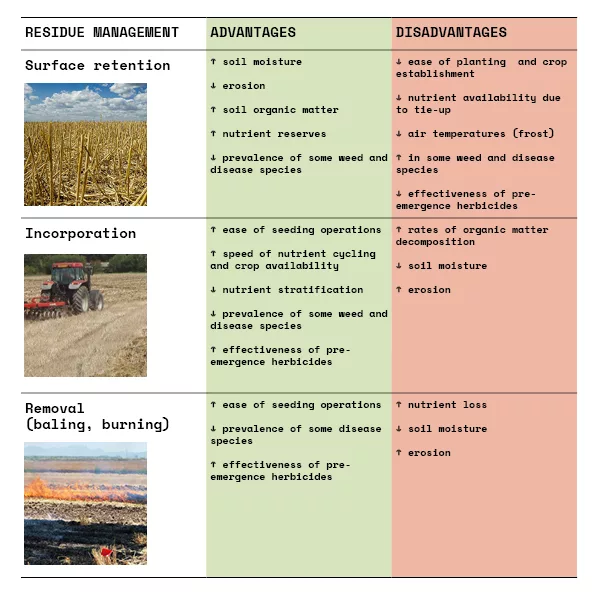
The management of stubble in the farming system plays an important role in nitrogen dynamics and needs to integrate the needs of the farm business.
Retaining stubble is preferred to help maintain soil organic carbon, promote nutrient cycling and prevent erosion.
If stubble is incorporated into the soil, the potential for nitrogen tie-up is both greater and more rapid than if left on or above the surface – incorporated stubble can immobilise 5-13 kg/ha of nitrogen for each tonne of stubble (GRDC, 2018). This differs to standing stubble, which has a slower rate of decomposition and will generally immobilise less than 5 kg/ha of nitrogen (GRDC, 2018).
The C:N ratio in stubble also impacts nitrogen tie-up, and determines stubble quality. Wheat stubble typically has a C:N of 80:1 and can reach as high as 120:1. A ratio greater than 80:1 generally means inorganic nitrogen will be immobilised during the initial decomposition of stubble in the first 4-6 weeks after a break of season rainfall event.
Legume residues generally contain more nitrogen, with a resulting C:N ratio of less than 22:1. Often they will also have contributed to the amount of soil nitrogen available through nitrogen fixation. This means there is often a surplus of nitrogen in excess of what the microorganisms require, resulting in a greater supply of available nitrogen to the plant.

Fertiliser decision making
Whilst there are a few moving parts, the management of nitrogen tie-up doesn’t have to be complicated if you have access to the right knowledge and data.
Nitrogen tie-up is generally a temporary constraint associated with rainfall after an extended dry period, with tied-up nitrogen released later in the season through microbial turnover.
- Deep soil testing (ideally down to 100cm) prior to seeding lets you know the background level of soil nitrogen.
- Identifies paddocks where yield and protein targets may not have been met in previous seasons.
- Measuring soil organic carbon is also valuable as the amount of nitrogen fertiliser applied at sowing may be increased where soil organic carbon is less than 0.8% (GRDC, 2018).
- Deep soil testing (ideally down to 100cm) prior to seeding lets you know the background level of soil nitrogen.
- Identifies paddocks where yield and protein targets may not have been met in previous seasons.
- Measuring soil organic carbon is also valuable as the amount of nitrogen fertiliser applied at sowing may be increased where soil organic carbon is less than 0.8% (GRDC, 2018).
- A rule of thumb is that every tonne per hectare of cereal stubble will tie-up 5 kg/ha of nitrogen – more than this level of nitrogen needs to be supplied to avoid tie-up.
- The amount of nitrogen applied at sowing may be increased where:
- Following a non-legume crop or pasture
- Stubble loads are greater than 3 t/ha
- Targeting high yields
- Banding nitrogen at seeding can decrease immobilisation in stubble-retained systems, by separating nitrogen from carbon residue and ensuring the majority of nitrogen applied is available for the plant during crop establishment.
- If soil nitrogen is low, applying nitrogen fertiliser at the time of stubble incorporation may assist in reducing the amount of nitrogen immobilised.
- Split application of nitrogen is a common technique that allows for changes in rate based on seasonal conditions, without jeopardising early growth. This is particularly an option in high rainfall areas where yield potential, and therefore nitrogen demand is high. A split of 70% of nitrogen at sowing, followed by in-crop top-dress of 30% is often used (Hoyle & Murphy, 2018).
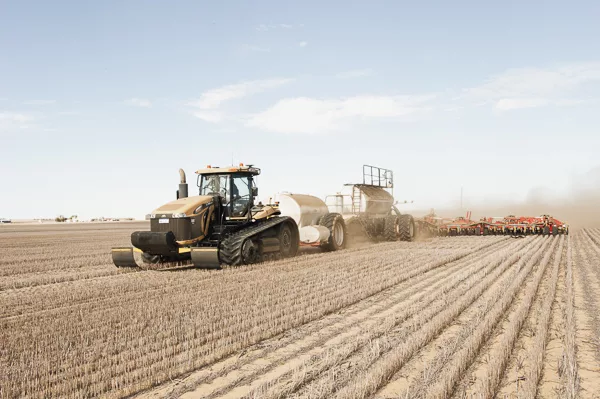
Nitrogen fertiliser is often the single biggest variable cost facing grain growers each year (GRDC, 2022), making its management crucial to farm profitability. The environmental impact of nitrogen losses is also increased criticism globally, meaning that it’s more important than ever to optimise fertiliser efficiency.
GroundCover: Agronomy still top priority for nitrogen fertiliser decisions
A survey of Western Australian growers has revealed that the...
Read MoreGrains Convo Podcast: Soil testing and increasing productivity from N, P, and K
In this episode of Grains Convo, DPIRD Research Scientist Craig...
Read MoreCurrent projects
MORE STORIES

Climate-Smart position available for Post-Doctoral Researcher
The Sustainable Land Management Group at Murdoch University is seeking a Post-Doctoral Researcher to support a Climate-Smart project.

Plant-soil-microbe scholarship on offer at Murdoch
Murdoch University is offering a domestic PhD scholarship to investigate plant-soil-microbe interactions in Australian semi-arid ecosystems.
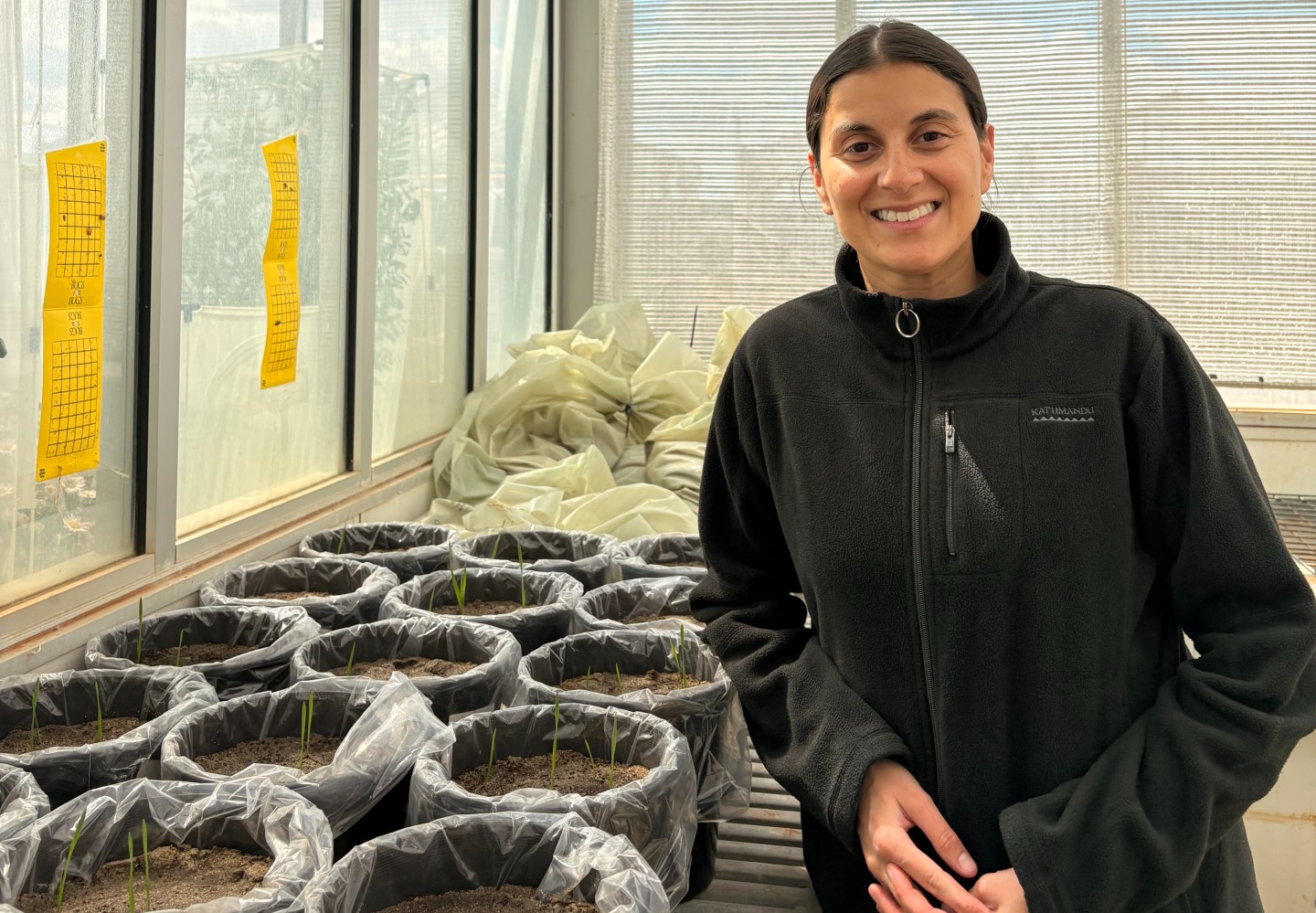
Northam calling for potassium tracing
DPIRD Research Scientist Maria Pfeifle has switched her focus from water repellency to potassium and nutrient management.

Boodja lecture part of Hall’s farewell
Retiring DPIRD Principal Research Scientist David Hall will deliver Soil Science Australia’s 2025 Annual Boodja Lecture.
